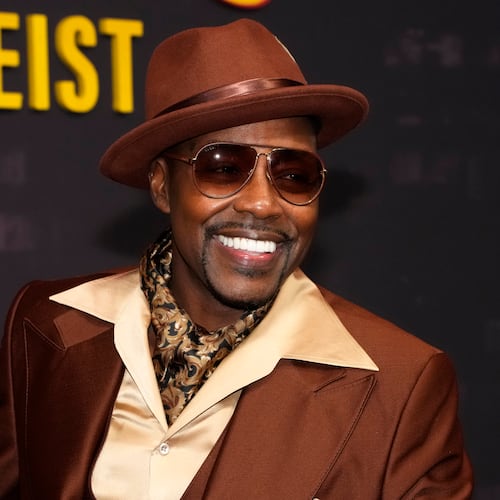CNN, under Ted Turner throughout the 1980s and 1990s, aspired to be about news first, not personality.
“I miss the way news used to be when I did it,” said Lyn Vaughn, an anchor for CNN’s former sister station Headline News from 1984 to 1998. “The focus ought to be what’s happening, not which slant you have. It’s all about the truth.”
But 2023 isn’t 1993. CNN faces a very different media ecosystem than it did during Turner’s heyday.
Its challenges are deep and layered, some self inflicted, some well beyond its control, stretching from political polarization to how Americans consume news.
The most acute is the shrinking cable universe where much of CNN’s financial fortunes reside.
Every year, CNN receives hundreds of millions of dollars from pay TV providers such as Spectrum, AT&T, Verizon and Charter Communications paid for by subscribers, whether they watch the network or not.
All of CNN’s cohorts, from ESPN to Fox News, are facing the same dilemma: the steady erosion of subscribers to streaming services.
In the first quarter of this year, the largest pay TV providers representing 96% of the market lost 2,215,000 in net subscribers compared to a 1,850,000 net fall a year earlier, according to Leichtman Research Group.
About 73.7 million U.S. households pay for cable, down from more than 105 million at the peak in 2010, once penetrating 90% of households.
The shift is technological, cultural and generational. As the ads on cable television attest, most viewers are older, while younger people are increasingly wedded to the information and entertainment flowing to the devices in their hands.
“They are in a difficult spot,” said Dan Rayburn, a media industry analyst specializing in streaming and technologies. “All these organizations are.”
CNN relies on advertising tied to ratings. MediaRadar, which tracks advertising, estimated that the network’s revenue from digital and TV ads was down an alarming 39% during the first four months of this year.
“The days of broadcasting, the days when Walter Cronkite gave the news and got 65 million viewers — only the Super Bowl now gets that many,” said Paul Levinson, a media studies professor at Fordham University. “That is the structural reason CNN is in trouble. It’s the way people get the news today. ... Kids and young adults: they don’t watch TV.”
This is all happening while CNN is attempting to realign its mission after two lurching management changes in less than 16 months.
Jeff Zucker, beloved by much of the staff, was ousted last year after nearly a decade for not disclosing a romantic relationship with a staffer.
During Zucker’s tenure, the network was a frequent critic of President Donald Trump, and made him a primary focus, making it popular with liberals while alienating many conservatives. They relied heavily on commentary and opinion, moving away from the news focus of CNN’s years. The strategy brought in ratings, viewers and profits for years. After Trump’s departure from office, the spigot started to run dry.
Warner Bros. Discovery, which became CNN’s new owner last year, brought in new management led by David Zaslav. Zaslov killed off the month-old CNN+, the network’s effort to address viewership changes. He also hired Chris Licht to replace Zucker and help CNN move back toward the center by focusing on facts and news.
Internally, many CNNers were game with this return to Turner’s original mission, but Licht’s execution was clumsy and many of his decisions blew up in his face, alienating employees and viewers alike.
Like any organization, CNN depends on its employees — from assistants to scriptwriters, reporters and well-known on-air personalities. And while current employees are not giving for-the-record interviews, multiple accounts from the inside convey a confused workforce that feels betrayed and fearful for the future.
The Trump town hall last month was a major blow for morale. Licht said he wanted it to be a forum to ask tough questions and make the former president accountable for his past actions but instead became a circus fueled by a Trump-partisan crowd cheering him on like he was Jerry Springer.
“We were horrified by the Trump town hall,” said one veteran Atlanta-based producer who spoke on condition of anonymity because they weren’t authorized by CNN to speak on the record. “We looked really stupid.”
An Atlantic profile of Licht that came out earlier this month painted him as equally cocksure and clueless, for example criticizing CNN’s COVID-19 coverage to an outside reporter without ever telling staff first. He was out within days, and Zaslav took responsibility for the botched hire.
But the damage is done. Many of the producer’s colleagues are hunting for other jobs, they said: “I’m really thinking that the culture shift he started might not leave with him.”
Indeed, CNN’s strategy isn’t changing under a temporary four-person management team.
CNN is still working to curry favor with Republicans who had avoided the network during the Trump presidency. It has aired three more town halls with Republican presidential candidates since Trump, all without major incident. Zaslav, on a media call before Licht’s departure, proudly noted that CNN convinced 75 Republicans to be interviewed on air during Kevin McCarthy’s battle to become House speaker in January, 41 of which came on the network before Fox News.
At the same time, CNN is going back to its roots in terms of approach. On air, the network has cut back on opinion-based panel discussions and is spending more time talking to its own news correspondents. To give a sense of action, its anchors are now largely standing and walking around, not sitting. It has de-emphasized its anchor personalities by taking their names off most of the daytime schedule, just calling it CNN News Central.
But can CNN truly turn back the clock?
C. Ann Hollifield, a former University of Georgia professor who now consults on global media viability projects, said for much of the 20th century, “neutral” fact-based journalism was a viable business thanks to the limited number of news sources available to most people.
Now with news sources splintered into the tens of thousands, it makes it easier for consumers “to choose only those sources that will tell them what they want to hear regardless of facts,” Hollifield said. “Given what psychologists already establish about human thinking, that leaves organizations that try to continue practicing fact-based journalism with a fairly small potential market share.”
This makes CNN’s renewed focus on fact-based journalism problematic from a business standpoint.
And CNN even has a direct rival now in this universe with three-year-old NewsNation trying to emulate a comparable “facts first” approach. It recently went 24/7 and has seen small gains in viewership but lags far behind other cable news networks in viewership, drawing about 100,000 simultaneous viewers any given night versus nearly 500,000 for CNN in May, according to Nielsen numbers.
CNN has a significantly larger staff than NewsNation at 4,000 employees worldwide, one quarter still in Atlanta, once headquarters to the network but since supplanted by New York. CNN also has a sizable CNN International viewership and one of the largest digital news sites in CNN.com, which had 416 million visits in April in the United States, second only to The New York Times, according to Similarweb.
Changing perceptions about CNN could take a long time, and it may be impossible. Trump and many in the right-wing media world have spent so many years disparaging CNN as a liberal cesspool, that idea has become an intractable opinion among a sizable number of Republican voters. According to an extensive survey by YouGov in April, CNN was the most polarizing network among 56 options, with conservatives seeing CNN as liberal skewing as MSNBC. There is a 92-point difference between the net trust among Democrats (+55) vs. Republicans (-37%) for CNN.
Levinson said there is a broad middle that CNN could feed without scaring off its hardcore viewers: “The public has a hunger for reporting news as objectively as possible. Most people do want something balanced and objective. I think that’s the only path they can follow. You don’t do that by turning things over to Trump.”
When CNN arrived on the scene, its 24-hour format was a novelty that drew news junkies. But what cemented its brand for a generation was its coverage of the Gulf War in 1991. For many millions of people, CNN became the place to turn to for live news in a crisis.
Over the ensuing years, CNN had identifiable faces and names, people like Anderson Cooper, on the ground from places where there was a crisis or war, Levinson said. “Fox doesn’t have anything that is the equivalent. CNN has a unique position.”
Doubling down on the brand is not the low-cost way to go, but it is a better strategy than mimicry of its rivals, he said: “It costs almost nothing to have a bunch of angry people at a table. But you have to give people more than that.”
Rich Greenfield of Lightshed Partners, in a recent interview for CNBC, pondered whether CNN might be better off with a more news-oriented owner, noting that CNN is a tiny fraction of Warner Bros. Discovery’s vast portfolio of TV networks, the Max streaming services and film and TV production.
“The whole thing is a nonstop headache for Warner Bros. Discovery,” Greenfield said.
Keep Reading
The Latest
Featured




